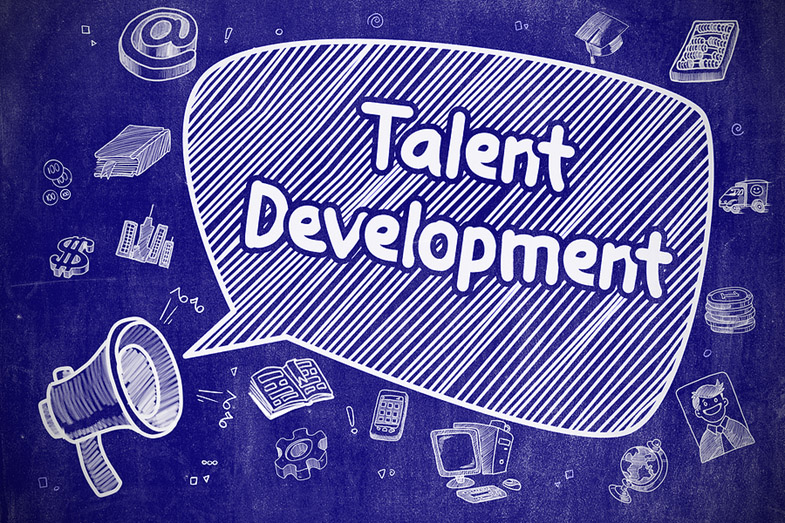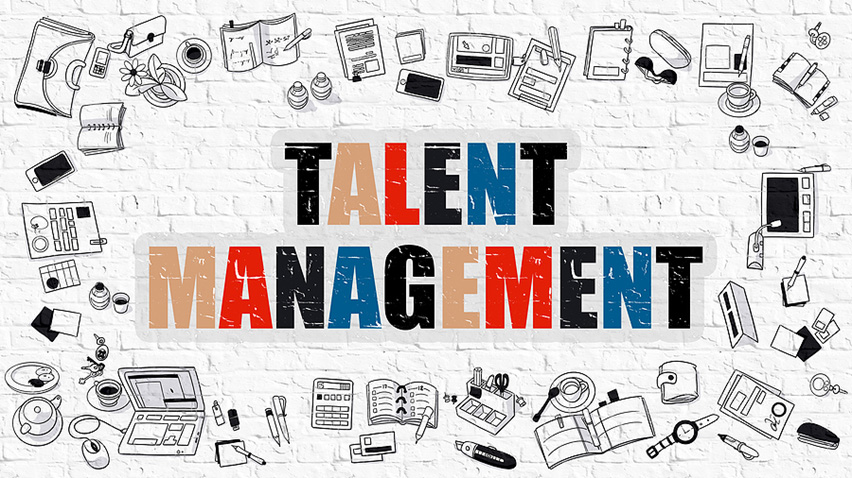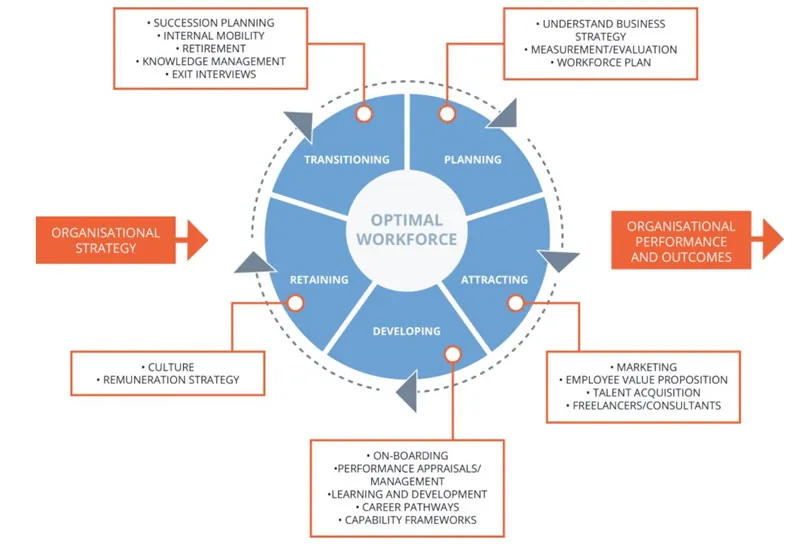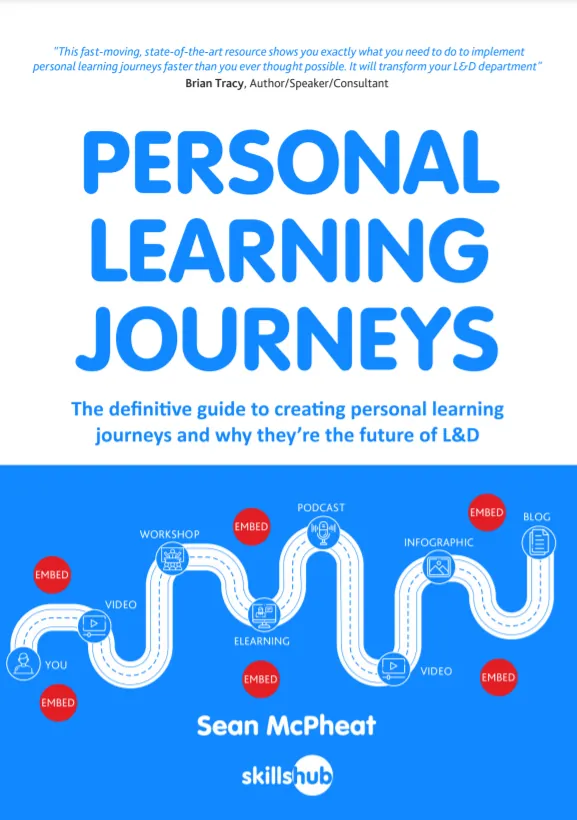
Much has been written about talent management of late, in part due to the radical shakeup taking place in the world of employment, due to the COVID-pandemic. The transition to remote or hybrid working, the great resignation, and a long overdue reappraisal of workforce diversity have a led to talent management, and human resources in general, becoming a major talking point for organisations in 2021/2022.
In this article we’ll look at what constitutes Talent Management in the 21st century, what its benefits are if carried out properly, and how it helps organizations grow and thrive. Let’s start by defining our terms.
What is Talent Management?
Gartner research defines it thus: “Talent management is the attraction, selection, and retention of employees, which involves a combination of HR processes across the employee life cycle.” They then go on to list the processes which constitute talent management, which include:
- Recruitment
- Onboarding
- Upskilling and Training
- Support and Mentoring
- Development and Promotion
- Remuneration
- Non-Fiscal Appreciation
- Retention and Infilling
We’ll explore some of those notions below.
What’s essential to talent management is that it’s a holistic process which looks after employees across the whole of their organisational lifespan, and it does this for reasons which benefit both the individual employees and the employer.
Why is Talent Management Important?
Good talent management makes a difference.
A recent McKinsey Survey of employee attitudes to their company’s talent management strategies produced an interesting result. Although only 5% of employees felt their company had very effective talent management processes, 99% of those respondents believed this contributed to their organization outperforming the competition.

Source: McKinsey.
It seems that improving talent management is a sure-fire way to gain a competitive edge, especially when it is an underutilized strategy.
In fact, effective talent management provides a host of benefits to both the organization and its employees.
Benefits of Effective Talent Management for Organisations
- Reduces the need for regular recruitment drives by improving retention and internal promotion.
- Ensures vital roles are appropriately filled, improving productivity.
- Improves public perception of brand (especially if diverse recruitment initiatives are championed effectively).
- Improves job satisfaction, which reduces absences and sick days, enhances productivity, and improves retention.
- Allows innovation to flourish, since well-designed job roles contain variation and flexibility, building in time for new ideas.
- Improves HR budgeting for agency staff since fewer FTE and PTE roles are vacant.
Benefits of Effective Talent Management for Employees
- Employees feel welcome and enjoy their roles.
- Employers feel appropriately remunerated and valued.
- Desire to move to another company in the short-term is diminished.
- Staff feel more empowered to take part in vital decision-making
- Staff are engaged in terms of the corporate mission.
- Employees are happy to become unofficial brand advocates.
- Employees feel well-supported by their colleagues and managers.
- Boredom and restlessness are reduced with varied work roles.
- Employees have flexibility built-in, achieving a healthier work-life balance.
Younger employees, who likely make up the bulk of entry-level recruits, simply have a different set of values from Gen X or Boomer-era employees. Deloitte’s 2021 survey of Gen Z and millennial workers provided remarkable insights:
- 44% of Millennials and 49% of Gen Z workers have made decisions on which employer to join based on personal ethics.
- 35% of Millennials and 40% of Gen Z-ers have volunteered for or joined a community organization, charity or non-profit.
- 34% of Millennials and 40% of Gen-Z-ers created social media content on an environmental, political, social, or human rights issue.
- 40% of both generations felt their employers had poorly supported their mental health during the COVID-19 pandemic.
To recruit and retain younger workers, companies must look far more closely at their organizational culture, support systems and public-facing brand identity.
Focusing on a holistic process of talent management, rather than the somewhat drearier and bureaucratic concept of “human resources” will help 21st century companies attract the best employees and flourish.

What is the Talent Management Process?
Talent Management, as we’ve seen, is not a “once and done” activity, nor an occasional project to dip into. It is best understood as a perpetual cycle of processes which feed into one another.

Source: Expert 360.
There are six parts to this process, each requiring a different focus and range of activities. Let’s look at stage each more closely.
PLANNING – Getting to Know your Vacancies
At regular intervals, companies need to assess the staffing levels of all departments, identifying roles which aren’t currently filled, roles which need to be created and roles which could be retired. As technologies advance, some positions naturally become redundant, and others open up. Role design becomes a vital part of both recruitment and retention.
Talent management assumes that the company seeks to recruit the best individuals, and therefore should offer competitive positions which take into consideration (in no particular order):
- Job Variety and Fulfilment.
- Flexibility in Working Conditions
- Remuneration and Ancillary Benefits
- Experience Level and Qualifications
- Potential for Upskilling and Advancement
- Environmental and Social Contribution of Role
The three factors outlined in bold are elements which traditional HR recruitment might consider less important, but surveys and experience show they form important considerations for younger employees.
Once vacancies are identified and roles designed to be maximally attractive, it’s time to reach out to attract the talent.
ATTRACTION – Recruitment through Traditional and Innovative Means
Whereas it might once have been enough to work with recruitment agencies or post job advertisements in newspapers and online, there are new ways to source employees in 2022:
- Recruitment Fairs
- Specialist Recruitment Companies
- LinkedIn Advertisements
- Other Social Media Recruitment Drives
- Industry-Specific Recruitment Sites
- Internal Job Boards
- Employee Referral Programs
- Niche External Job Boards
Demand for more Facebook posted job advertisements is high present, with Work4 reporting that 81% of jobseekers want to see more opportunities listed on the platform.
Devising a strategy for attracting potential candidates is vital. To do so, employers first have to decide how the ideal candidate would look, sound, and behave. Creating an ideal employee avatar for each role, whilst retaining sufficient flexibility not to unduly prejudice the process, becomes a vital challenge.
To know where to focus your advertisements, you first have to decide who you are trying to attract. Only then can you write effective recruitment copy.

Learn How To Create Personal Learning Journeys For FREE!
SELECTION – Choosing between Applicants to Ensure a Perfect Fit.
There are many factors to consider when choosing between candidates. The brute metrics of qualifications and years of relevant experience can only take employers so far, particularly when a company is attempting to improve diversity in hiring practices.
Instead of obsessing over these legacy measures, forward-thinking organizations should throw the following into the mix as well (again, in no particular order):
- Commitment to social, environmental, and political causes (where these align with the brand).
- Willingness and ability to work flexibly (important for remote and hybrid roles).
- Expectation regarding remuneration and retention (where do they see themselves in 5-, 10- and 15-years’ time?)
- Likelihood of the candidate to fit into the corporate culture.
- Range of skills beyond raw educational qualifications.
- Range of life experience beyond paid employment (travel, volunteering, creativity).
- Any unique perspective they may bring to the company.
These sorts of factors may not come out especially well in application forms, or even on resumes. However, AI-driven recruitment technology can be leveraged to increase the volume of applications you can assess and shortlist, meaning it’s safe to throw the net a little wider.
With remote interviews becoming a reality, companies may be able to increase the number of candidates they call to interview. Pre-interview challenges and group recruitment events are examples of additional strategies companies can explore as well as the traditional trawl through 1000s of resumes.
The chosen candidate will hopefully slot right into their role, but it’s never a perfect fit, and that’s where the next stage comes in.
DEVELOPMENT – Fitting the Employee to their Role
Once the ideal candidate has been found, the process of onboarding begins and it’s more than just a process of mandatory training and showing a new employee the ropes. It might also include:
- Additional virtual online training, on-the-job training or upskilling.
- The assignment of a work mentor.
- Defining potential career progression.
- Access to an online eLearning platform and elearning courses.
- The setting of reasonable goals for the first few months.
- Regular job rotation rather than shadowing.
- Attendance of a brand “boot camp” with fellow new recruits.
Mentoring is underused and undervalued yet appreciated by new recruits. Harvard Business Review found that while 76% of working professionals saw benefit in having a work coach, over 54% lack such an arrangement.
The items on the above list in bold are also undervalued. Rotating an employee in the first few months, so that an employee gets a taste of what his or her colleagues do, can be vital to team cohesion and to the employee having a sense of possible role progression.
Studies have shown that new recruits rate their employer’s brand identity as vital to their choice to join the company. It makes sense therefore, to make their feel welcomed to the team and inculcated in its brand values from day one. Boot camps can contribute to team cohesion and give new recruits a buzz of excitement about having joined a top brand.
However, mentoring and upskilling doesn’t just stop when the employee is initially inducted. The Talent Management approach develops staff throughout their time with a company.
RETENTION – Maximizing the Value of Each Employee
Employers no longer expect new recruits to necessarily be with them in 10, 15 or 20-years’ time. The modern world of employment is much more volatile and fast changing that it once was. However, it clearly pays to retain talented employees in-house and a well-designed talent management process has techniques to do so, including:
- Promoting staff or offering “acting up” opportunities with enhanced pay.
- Financial bonuses and increments paid out at specified intervals.
- The awarding of special projects or project team membership.
- Increased responsibility, including decision-making and idea generation.
- Providing opportunities for learning new skills.
- Rewarding achievement verbally and in writing.
- Creating custom elearning solutions that are specific and relevant.
Many of these incentives don’t have a cost implication; indeed, they may save the company money by promoting internal promotion which reduces the expense of external recruitment.
Gratitude is an often-overlooked commodity in the workplace, and one that one Forbes article recommends expressing much more frequently. The article cites an American Psychological Association study which reported that 93% of employees who feel valued work more effectively, and 93% feel more engaged.
When retention can’t be managed, at least within a specified role, the next stage in the cycle takes over.
TRANSITIONING – Moving Staff on and Preparing to Recruit.
Transitioning might include traditional retirement processes, with rewards and incentives for long service. For employees moving to other companies, a friendly exit interview might help improve the role for any newcomer.
Other activities to consider in this stage of the process:
- Potential for internal recruitment.
- Temporary in-filling through employees “acting up”.
- Revision of job role, or amalgamation of roles.
- Lessons learnt from the employee who is moving on.
The Exit Interview is often a missed opportunity. It should not be a fearful or punitive process. When engaged in a constructive manner, it can make the leaving employee feel like their contribution has been heard and recognized. Similarly, their employer can garner the kind of insights the employee might not have felt empowered to provide previously.
Once these processes have been undertaken, if a vacancy is left, the cycle moves back to the planning phase. Various departments are likely to be at different stages of the cycle at different times and within departments various roles will have reached different stages of the process, making Talent Management a perpetual endeavor.
Conclusion: Understanding the Talent Management Model
As we’ve seen, Talent Management is a cyclical process which properly values employees and their contribution to the success of an organisation. It treats new recruits both as assets and individuals, striking the right balance between the employees’ wants and needs and the demands of the role which must be filled.
As the years progress talent management will become ever more sophisticated. As working attitudes, environments and cultures continue to evolve, so must brands’ approaches to investing in new talent while maximizing what they already hold in-house.
Skillshub is an LXP which can help with the talent management process by providing a platform and resources to help to develop your talent. Also known as an LMS, you can see if you need an LMS for your talent management strategy or not.
If you’re ready to level up your L&D strategy with the help of an eLearning company, get in touch with us today!













